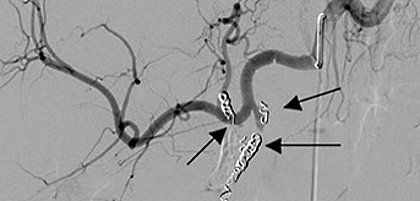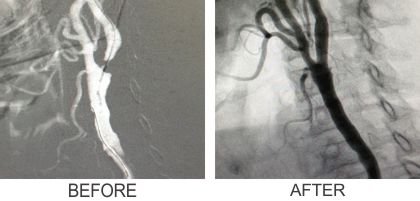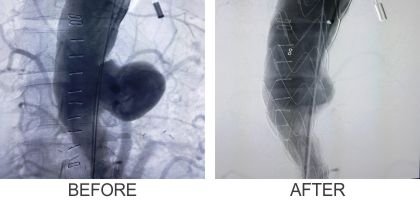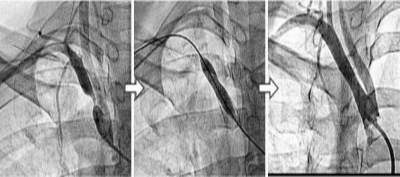Endovascular Treatment and Surgery Procedures
What Is Endovascular Treatment?

Endovascular treatment is a non-surgical treatment of disease from within the blood vessel. Some of the common endovascular procedures include:
- Angiography
- Peripheral angioplasty (Balloon with or without stenting)
- Embolisation of bleeding vessels or tumours
- Catheter thrombolysis for DVT
- Covered stents for aneurysms
What are the benefits of endovascular treatment?

Endovascular options have following advantages as compared to conventional
surgical procedures:
- Lower risk
- Shorter hospital stay
- Shorter recovery time
- Less bleeding
Which doctors do endovascular treatment?

World over, it is well known that cardiologists and interventional radiologists perform these procedures of angiography and angioplasty. However, the new generation of vascular specialists who are trained in vascular surgery as well as endovascular procedures can definitely provide comparable results. The other major advantage of vascular specialists is that they can provide both surgical and endovascular options and choose the best one for the patient on an individual basis. New complex hybrid procedures which involve utilising both surgical and endovascular methods are also very well performed by a team of vascular specialists.
Frequently asked questions

Endovascular means “inside the blood vessel”, Endovascular treatment is mainly performed from inside your body blood vessels using thin, long tubes called catheters. Catheter is inserted in a small incision or needle hole in the arms/ groin and guided through the blood vessels. Endovascular Surgery is a less invasive procedure and it’s a very innovative technique used to treat problems affecting the blood vessels in the body. Endovascular Surgery is a minimally invasive procedure to diagnose and treat vascular disease.
Stroke can be treated through endovascular procedure, this treatment involves placing a catheter / long tube into the brain for removal of clot that is causing the stroke. Endovascular treatment must be done within six to nine hours of the onset of a stroke by the experts, depending on the location. Endovascular procedure in stroke treatment can restore blood flow within a few minutes in the brain.
Endovascular Surgery and Vascular Surgery are both modalities of treatment is to treat vascular disease. Endovascular Surgery describes a minimally invasive approach whereas Vascular Surgery is more invasive and involves incisions, which is more in surgical nature. Vascular specialists are those who can perform both vascular surgical and Endovascular procedures.
Endovascular procedures ( also called Endovascular surgeries) can be used for peripheral angioplasty of peripheral arterial disease or carotid disease, Endovascular repair of Aortic Aneurysms ( EVAR, TEVAR), angioembolisation of Vascular Malformations, angioembolisation of tumors or bleeding vessels.
Usually there are no major complications or risks of endovascular treatment while treating blood vessels but in some cases procedural complications including access site problems like vessel / nerve injury, hematoma, aneurysm and groin infection can occur in approximately 4 to 5 % of people undergoing endovascular procedures . Additional lesion related complications can occur in 2 to 3% of patients which includes Vasospasm, arterial perforation and dissection, device detachment/misplacement. Some other complications include anaesthetic / contrast related problems like aggravation of renal failure.
Candidate eligibility for endovascular surgery is dependent on multiple factors like extent or type of blockage as well as patient factors like age, surgical risk or comorbid conditions.
Like any other procedure or surgery, endovascular surgery does have potential complications and serious consequences which may include blockage of the blood flow through the stent.
Most patients stay in the hospital for only 1 to 3 days after endovascular surgery. Mostly recovery in endovascular surgery is faster and with less pain than traditional open surgery.
No, comparatively endovascular surgery is less painful procedure than traditional open surgery, and also offers other advantages including faster recovery, less infection, comfortable and less stress on the heart and fewer risks for patients with other medical conditions.
Gallery

1. Coil Embolisation

2. Iliac Angioplasty

3. Carotid Angioplasty

5. Renal Aneurysm Coiling

4. Aortic Aneurysm

6. Subclavian Angioplasty




